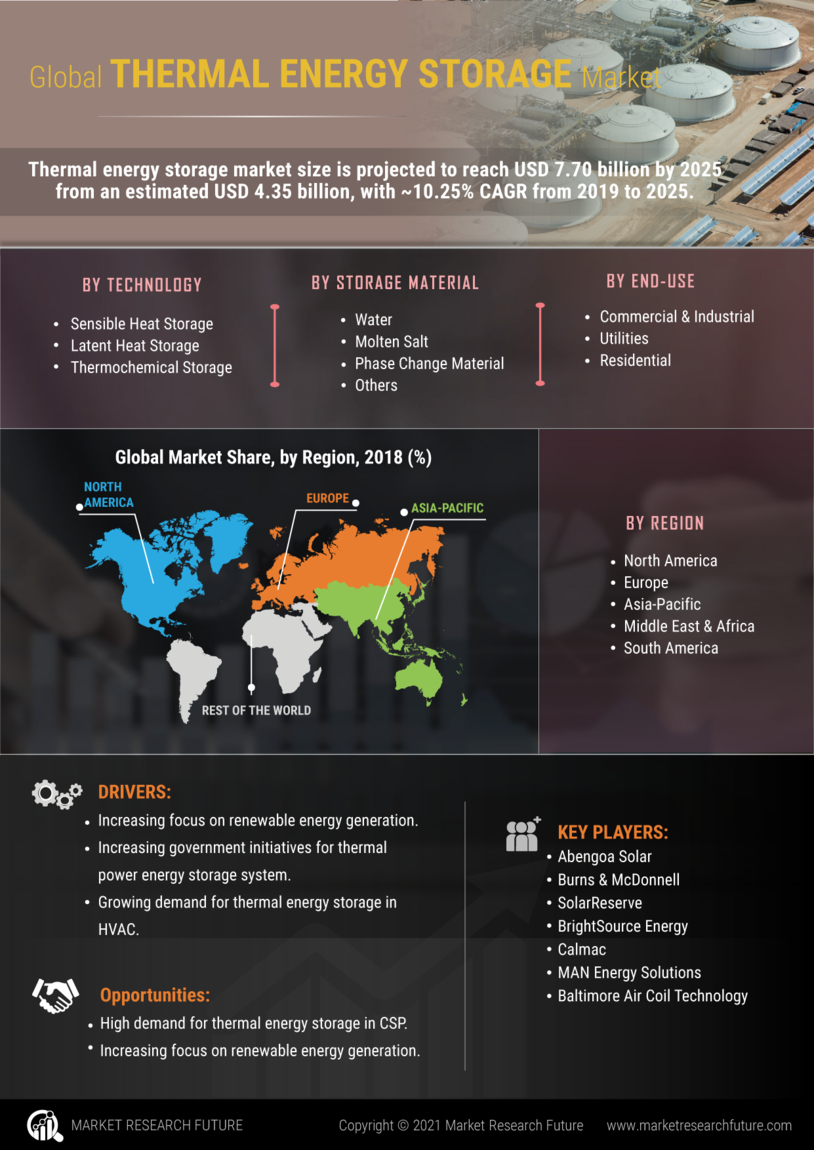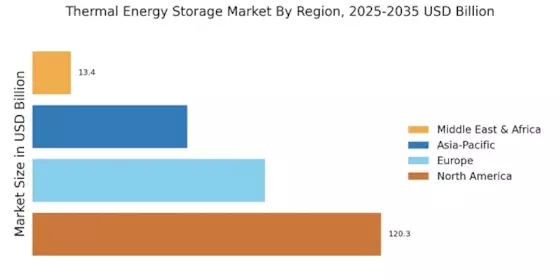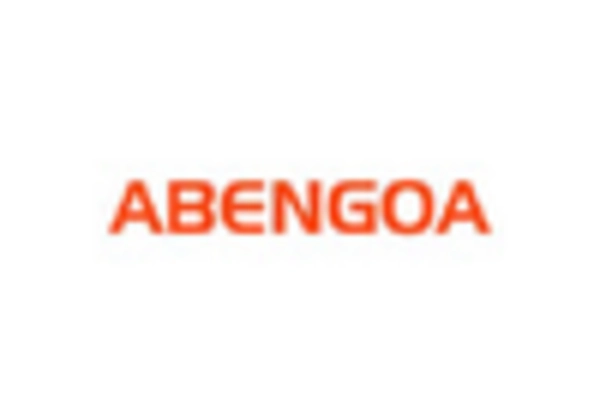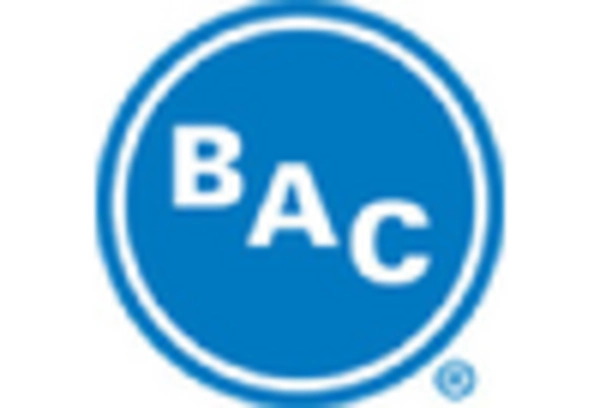Growing Focus on Sustainability
Sustainability has emerged as a central theme in the Thermal Energy Storage Market. With increasing awareness of climate change and environmental degradation, there is a pressing need for sustainable energy solutions. Thermal energy storage systems contribute to this goal by enabling the integration of renewable energy sources, such as solar and wind, into the energy mix. By storing energy generated from these sources, thermal energy storage helps to reduce reliance on fossil fuels and lower greenhouse gas emissions. The market for sustainable energy solutions is expanding, and thermal energy storage is positioned as a key player in this evolution, potentially leading to a more sustainable energy future.
Advancements in Material Technology
The Thermal Energy Storage Market is benefiting from advancements in material technology, which are enhancing the efficiency and effectiveness of thermal storage systems. Innovations in phase change materials and other storage mediums are enabling higher energy densities and improved thermal conductivity. These advancements not only increase the performance of thermal energy storage systems but also reduce costs associated with installation and maintenance. As a result, the market is witnessing a shift towards more efficient and cost-effective solutions. The ongoing research and development in material science are likely to drive further growth in the thermal energy storage sector, making it a more viable option for various applications.
Rising Demand for Energy Efficiency
The Thermal Energy Storage Market is experiencing a notable increase in demand for energy efficiency solutions. As energy costs continue to rise, industries and consumers alike are seeking ways to optimize energy consumption. Thermal energy storage systems allow for the storage of excess energy during off-peak hours, which can then be utilized during peak demand periods. This not only reduces energy costs but also alleviates stress on the grid. According to recent data, the energy efficiency market is projected to grow significantly, with thermal energy storage playing a crucial role in this transition. The ability to shift energy usage patterns is becoming increasingly vital, making thermal energy storage an attractive option for both commercial and residential applications.
Enhanced Grid Stability and Reliability
The Thermal Energy Storage Market plays a crucial role in enhancing grid stability and reliability. As energy demand fluctuates throughout the day, thermal energy storage systems provide a buffer that helps to balance supply and demand. By storing excess energy during low-demand periods and releasing it during peak times, these systems contribute to a more stable energy grid. This capability is particularly important as more intermittent renewable energy sources are integrated into the grid. The ability to maintain grid stability is becoming increasingly vital, and thermal energy storage is emerging as a key solution to address these challenges, potentially leading to a more reliable energy future.
Increased Investment in Energy Infrastructure
Investment in energy infrastructure is a significant driver for the Thermal Energy Storage Market. Governments and private entities are recognizing the need for modernized energy systems that can accommodate fluctuating energy demands and integrate renewable sources. This has led to increased funding for energy storage projects, including thermal energy storage systems. According to recent reports, investments in energy storage technologies are expected to reach unprecedented levels in the coming years. This influx of capital is likely to accelerate the deployment of thermal energy storage solutions, enhancing grid reliability and supporting the transition to a more resilient energy landscape.


















Leave a Comment